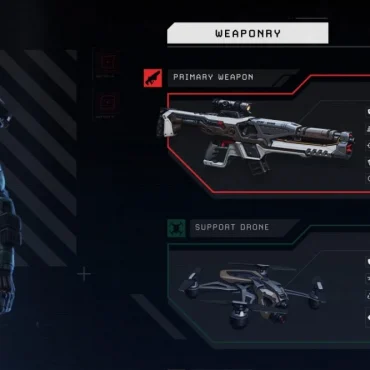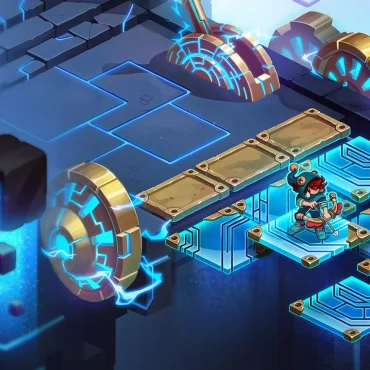Let’s just for a moment forget about all the buzz of AI-caused end of the world or labor crisis, or even predictions of unprecedented technological utopias. In the practical world of game development, AI is neither an existential threat nor a panacea. Instead, it’s a tool—a powerful one—that enhances workflows, supports creative processes, and opens doors to new design possibilities.
In its most effective implementations, AI serves as a collaborative partner to developers, automating routine tasks and generating new ideas. From generating high-quality 2D assets to crafting believable NPC behaviors, AI for games has just begun to reshape the development landscape. This article dives into its potential applications and real-world use cases to illustrate how artificial intelligence in video games is transforming the industry—and why its potential deserves attention.
AI in games is the new status quo
The rapid improvement of artificial intelligence over the last years has created lots of opportunities across industries, and gaming is no exception. These technologies have the potential to close the gap between creativity and automation, enabling studios to tackle large projects while maintaining cost-effectiveness.
Why is AI in video games so important? First, the demand for larger, more detailed game worlds is growing. Players now expect expansive environments, dynamic character interactions, and increasingly sophisticated systems. Meeting these expectations requires scalable solutions, and AI is uniquely suited to address this challenge. By automating repetitive processes—such as asset generation, bug detection, or even balancing gameplay mechanics—AI allows developers to focus on what they do best: creating innovative and immersive experiences.
As we explore specific applications, one of the most tangible examples is AI-powered 2D art generation, which has long been making waves.
AI-driven 2D art generation
2D art generation AI in video games was first perceived as the archenemy of artists and creativity, but now it is more of a tool that simply complements 2D artists and art directors. AI technology can cut down the time and cost associated with art creation by up to 60%, depending on the complexity and type of the necessary deliverable. This is particularly noticeable in generating item skins, human portraits, landscapes, and icons. Furthermore, AI algorithms can produce an infinite number of variations, providing artists with a source of inspiration. This rapid concepting capability allows for swift adjustments to the concepts, moods, and ambiance of artworks, thereby facilitating a more dynamic and iterative creative process.

However, while AI for games offers some advantages, it does come with limitations. Legal and aesthetic considerations prevent AI-generated art from being used as final products without human intervention. AI systems must be carefully managed to avoid imitating specific artists’ styles and cannot effectively handle highly specific or dynamic queries involving particular characters or actions.
Despite these challenges, the research into the integration of AI into the art production pipeline has enabled game development teams to identify optimal use cases, such as landscape generation and environment concept art, where AI can maximize efficiency. Ultimately, artificial intelligence in video games serves as a foundational tool that enhances the creative process, requiring human expertise to refine and adapt the generated content for final use.
Despite these hurdles, AI’s role in 2D art production is expanding, with tools like Midjournay and Runway paving the way for deeper integration into mainstream workflows. When used responsibly, AI in games becomes less of a shortcut and more of a catalyst for new ideas.
Text-to-speech in game dialogues
Another example of AI for games implementation is text-to-speech voice acting. The shift from mostly text-based dialogue systems, common in older titles like The Elder Scrolls III: Morrowind, to fully voiced dialogue in successors such as Oblivion and Skyrim has significantly increased production costs. Hiring professional voice actors, managing recording sessions, and editing audio files can strain budgets, often limiting the scope and variety of in-game conversations.
Text-to-speech (TTS) technology, offers an alternative. Modern TTS systems, trained on vast datasets, can generate fairly realistic and expressive voices, potentially reducing the need for traditional voice actors in some scenarios. This opens the door for games to feature richer and more dynamic dialogue systems. For instance, TTS could enable procedurally generated dialogue for non-player characters (NPCs), allowing them to respond adaptively to player actions with contextually appropriate, voice-delivered lines. But more on that later.
However, despite its progress, TTS technology still faces notable limitations. Current systems struggle to replicate the nuanced emotional performances required for narrative-heavy games or key character moments. Human voice actors excel in delivering subtle emotions and tailoring their performances to a director’s vision. Additionally, AI-voiced NPC interactions risk feeling mechanical or impersonal compared to carefully crafted, pre-written human dialogue.
In the near term, the optimal solution may lie in hybrid approaches: using TTS for less critical dialogue or prototyping and reserving human actors for pivotal moments. As AI in video games continues to advance, the potential for TTS to emulate human-level expressiveness grows, making it a key area of interest for game developers looking to expand their storytelling capabilities without escalating costs.
AI-powered photorealistic filters
AI-powered photorealistic filters offer a glimpse into the possible future of hyper-realistic visuals. Leveraging advanced machine learning models like those used in tools such as Runway’s Gen-3 Video-to-Video, these filters analyze and reinterpret visual data to enhance textures, lighting, and environmental details. This technology has become popular after multiple videos of reimagined classics like Grand Theft Auto III and V with realistic graphics.
Today, these filters remain in their infancy. Current adaptations seem awkward, and running it in real-time would require a NASA-level computer. Seems like a fairytale, right? However, the similar past skepticism surrounding real-time ray tracing—a now-common feature in modern games—reminds us that today’s limitations often fuel tomorrow’s breakthroughs.
By tailoring AI models to the structured and predictable environments of games (like pre-mapping game objects), the processing requirements might be reduced. For instance, instead of dynamically interpreting every element in a scene, the AI in games could apply enhancements directly to identified assets like “building ID:24” or “vehicle ID:146.” This object-based approach would streamline the workload, enabling the system to operate more efficiently. Furthermore, instead of layering multiple filters simultaneously, developers could implement single-purpose filters that minimize resource consumption while achieving visually striking results.
The potential for artificial intelligence in video games to reskin older games with photorealistic detail is particularly exciting, offering studios a cost-effective way to modernize classic titles for contemporary audiences. While real-time applications are still on the horizon, one day AI-driven photorealistic filters might play their role in approaches to remasters and computer graphics.
ChatGPT-like NPCs
NPCs interactions in videogames often lack complexity, offering scripted responses and limited contextual awareness. Recent advancements in large language models, such as ChatGPT, present a opportunity to transform NPC dialogue. By integrating conversational AI into games, developers can create NPCs capable of responding dynamically to player actions, attire, inventory, or even ongoing game events.
Imagine a system where players interact with NPCs via voice commands, enabled by voice-to-text software. The spoken input could be processed by an AI like ChatGPT to generate a contextually relevant response, which is then synthesized into speech using AI voice generation tools. Such a setup would allow for uniquely personalized interactions with every NPC, forging dynamic relationships that evolve based on the player’s choices and the history of prior conversations.
However, the technical challenges extend beyond creating dialogue. For this system to feel immersive, the game world itself must adapt to AI-generated interactions. This requires constraining the AI to in-game lore, ensuring it responds appropriately within the context of the game’s universe. Developers would need to build extensive databases of game-specific knowledge, from lore and geography to cultural norms and character backstories, and define clear boundaries for NPCs’ knowledge. For instance, an NPC in a medieval fantasy setting should never discuss modern concepts like smartphones or quantum physics.
Resource constraints also present a significant hurdle. AI-driven NPC interactions demand substantial processing power, consuming RAM, GPU, and CPU resources, which exceed the capabilities of modern gaming systems. Additionally, real-time responses could suffer from latency issues. These and many other challenges make widespread adoption of AI NPCs impractical in the near term.
Nevertheless, as AI in games becomes more efficient and hardware evolves to accommodate higher computational demands, the future integration of ChatGPT-like NPCs has the potential to deliver deeply personalized, evolving interactions in breathing game worlds.
Testing games with AI bots
Game testing is one of the most resource-intensive aspects of game development, especially for sprawling open-world titles. Consider the case of Battlefield V—with its 601 individual features, manual testing would require an estimated 300 work-years to complete. Here enter AI-powered bots: these tools are transforming the QA process by reducing the time and effort required to ensure game stability and polish.
The primary advantage of AI in games testing lies in its ability to systematically explore a game’s mechanics, environments, and interactions. Traditional QA methods depend on human testers to discover bugs through extensive play sessions. While effective, this approach is limited by time, labor, and the inevitable human tendency to overlook repetitive or edge-case issues. AI-driven bots, on the other hand, excel at exhaustive exploration, simulating countless gameplay scenarios at speeds far beyond human capabilities.
Some major studios have already integrated AI-powered bots into their QA pipelines. These systems can autonomously navigate complex game worlds, identifying bugs that might go unnoticed during manual testing. For example, AI bots can simulate interactions with physics objects, detect irregularities in NPC behavior, or analyze complex quest triggers to ensure they function as intended. Beyond large studios, companies such as model.ai are democratizing access to AI-driven QA tools, allowing smaller indie developers to harness these benefits.
Yet, AI for games testing is not without its limitations. While bots are good at uncovering technical bugs, they struggle to identify subjective issues such as gameplay responsiveness, user interface intuitiveness, or narrative consistency—areas where human intuition and experience remain invaluable. Furthermore, pinpointing consistent reproduction steps for identified bugs can be challenging even for advanced AI in games, as it requires understanding nuanced cause-and-effect relationships within the game systems.
The key to maximizing the potential of AI bots lies in adopting a hybrid approach. By combining AI-driven exploratory testing with human expertise, expert QA teams can address both the mechanical and experiential aspects of game quality. AI systems handle repetitive, systematic tasks with unmatched efficiency, freeing human testers to focus on creative problem-solving and higher-level analysis. This synergy ultimately leads to faster testing cycles, improved bug detection, and a higher standard of quality in the final product.
As AI tools continue to advance, their role in QA is likely to expand, redefining how developers approach game testing. However, the human element remains indispensable, ensuring that the nuances of player experience are not lost in the pursuit of technical perfection. In this balanced collaboration, AI in video games acts as an accelerant, propelling the QA to greater efficiency and precision.
Wrapping up
The applications of artificial intelligence in video games explored in this article only scratch the surface of what’s possible. From enhancing efficiency through AI-powered 2D art generation and text-to-speech technology, to transforming NPC interactions with ChatGPT-like systems and innovating game testing with AI bots, the potential for AI in video games industry is immense.
It’s remarkable to consider that these innovations are just the beginning. As the technology continues to evolve, AI’s influence in the gaming industry is poised to grow, offering developers powerful tools to create more immersive, dynamic, and engaging experiences. Nonetheless, the challenge lies in harnessing AI’s capabilities ethically while preserving the heart and soul of game storytelling. Ensuring that AI in games complements rather than overshadows human creativity is crucial.
Ultimately, the synergy between AI efficiency and human creativity will shape the future of gaming. By leveraging AI to handle repetitive and labor-intensive tasks, developers can focus on the elements that require a human touch—creativity, emotion, and narrative depth.




